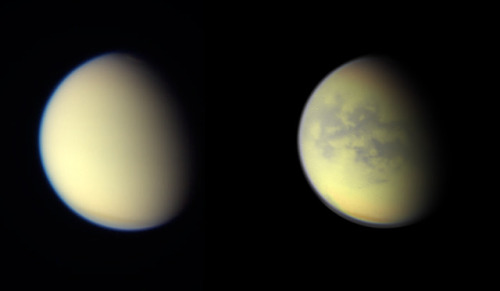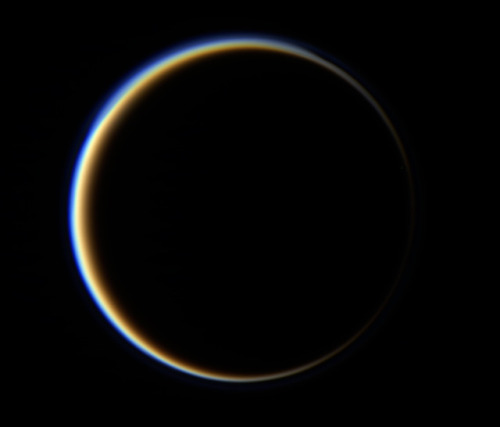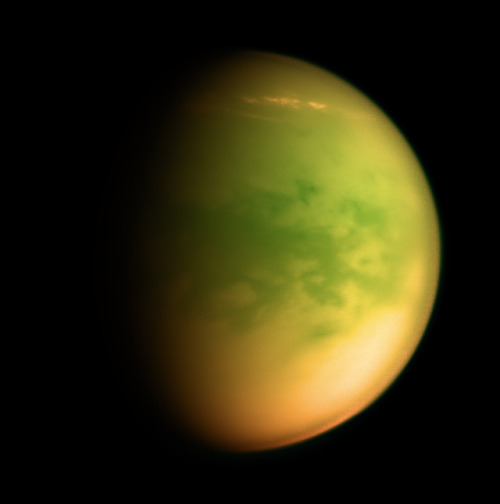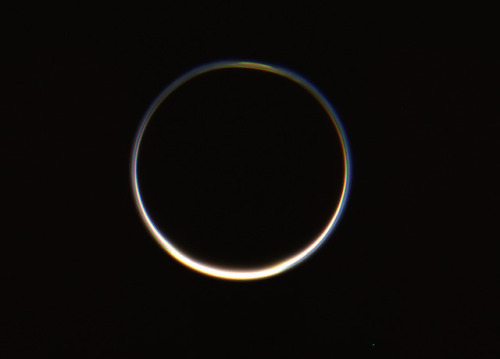My Space Engine Adventures, also any space related topic or news. www.spaceengine.org to download space engine. The game is free by the way. Please feel free to ask me anything, provide suggestions on systems to visit or post any space related topic.Check out my other blog https://bunsandsharks.tumblr.com for rabbit and shark blog.
294 posts
Latest Posts by sharkspaceengine - Page 7
Glowing Sky

Picture of the Day 2 - November 4, 2018
Auroras glow brilliantly over a lunar sky with the Milky way Galaxy looming large.
Purple Skies

Picture of the Day - November 4, 2018
The surface of a large moon orbiting a gas giant that has an unusual purple-tinted atmosphere. The moon has diatomic sulfur in the upper atmosphere producing the purple hue.
Blue Ring

Picture of the day - November 3, 2018
A cold ice-world with a thick nitrogen atmosphere backlit against a blue B-type sun. The star is so bright that all objects, even some asteroids reflect enough light to be visible orbiting close to the star. The comet-looking object is not a comet, but a planet getting its atmosphere burnt away by the sun.

Like the gaping mouth of a gigantic celestial creature, the cometary globule CG4 glows menacingly in this image from ESO’s Very Large Telescope. Although it looks huge and bright in this image it is actually a faint nebula and not easy to observe. The exact nature of CG4 remains a mystery.
Credit: ESO










Images taken by the Cassini & Voyager spacecraft of Titan, Saturn’s largest moon. Titan is the only moon in the Solar System to have a thick atmosphere and lakes of hydrocarbons (methane and liquid ethane).
To know more about the moon Titan click here
Image credit: NASA/JPL/SSI/Cassini & Voyager ( precessed by: Kevin Gill )
Green Desert

Picture of the Day - November 2, 2018
Weird green desert-world rich in life, but lacking any bodies of surface liquids. Planet has a thin carbon dioxide atmosphere, average surface temperature of 73°F on the day side and is tidally locked to the sun.
Vibrant Rings

Picture of the Day - November 1, 2018
I’ve decided to move closer to home and am now exploring the Large Magellanic Cloud Galaxy. You’ll see in numerous pictures the Milky Way in the background covering almost a quarter of the sky in some locations
First picture from the new galaxy a ringed ice-giant with a colorful ring system.






My last post of planets in the Triangulum galaxy, a ringed world montage. And all these planets were found in one star system.
I have not decided which galaxy I am going to visit next, but I will left you know in the next day or so.
Space Engine System ID: RS 1229-118-6-214335-274
High Resolution Pictures
Ice Giant
Colorful Ice Giant
Cold Helium Gas Giant
Super-Earth
Ice World
Earth-like planet with life.
Dark Cloud

Picture of the Day - October 31, 2018
A dark Nebula hangs over the sky of an airless moon.
Note: There will be one last set of pics posted for the Triangulum Galaxy this evening before I visit another galaxy to begin exploring.
My Blogs:
https://sharkspaceengine.tumblr.com/ - Space Engine and Astronomy Blog https://sharkrabbitandshark.tumblr.com/ - Rabbits and Shark Blog
Approaching Eclipse

Picture of the Day 2 - October 30, 2018
The approaching shadow of an eclipse across an alien desert.




Dunes on Mars captured by NASA’s Mars Reconnaissance Orbiter (MRO)
Credit: NASA/JPL-Caltech/Univ. of Arizona
River Valley

Picture of the day - October 30, 2018
Best shot yet of a river valley I have found, taken on an Earth-like world. The planet has a unique yellow-colored atmosphere.
New Blog is Up (Rabbits and Sharks)
My second blog, rabbits and shark’s is up and running. Pictures of my two buns are on there. The blog is all about just rabbits and sharks.
I’ll be continuing to update this blog regularly.
https://sharkrabbitandshark.tumblr.com/
Green World

Picture of the Day - October 29, 2018
Lush and green Earth-like planet with life and a large moon orbiting close by.
New Blogs - Coming Soon
To all my followers. I am creating some new blogs to include different interests of mine besides just astronomy and space engine. The first blog will be about rabbits and sharks. I know it sounds like an odd mix, but it covers both my favorites from land and the sea and will include pics of my two buns. A few other possible blogs I might start include general interests, sci-fi stuff, and maybe just thought for the day type material.
The rabbits and sharks blog should be up and running soon.
Orange Gem

Picture of the Day - October 28, 2018
Here we have another Titan-Like world with rings. Seas of liquid methane cover the surface, and a thick hazy nitrogen-methane atmosphere obscures most of the surface.
Evaporating Planets

Picture of the Day - October 27, 2018
These three planets (not comets) close to a white giant star losing their atmospheres. The giant star has expanded so fast that all of the inner planets are superheated to nearly 2,000 F.
Another Moon Shot

Picture of the day - October 26, 2018
A large moon against the backdrop of a stunningly colorful gas giant and it’s rings.
Pluto-Like Double World

Picture of the Day - October 25, 2018
Two frozen worlds very almost identical in their size ratio to one another as the Pluto-Charon double dwarf planet system.
Galaxies: Types and morphology
A galaxy is a gravitationally bound system of stars, stellar remnants, interstellar gas, dust, and dark matter. Galaxies range in size from dwarfs with just a few hundred million (108) stars to giants with one hundred trillion (1014) stars, each orbiting its galaxy’s center of mass.

Galaxies come in three main types: ellipticals, spirals, and irregulars. A slightly more extensive description of galaxy types based on their appearance is given by the Hubble sequence.

Since the Hubble sequence is entirely based upon visual morphological type (shape), it may miss certain important characteristics of galaxies such as star formation rate in starburst galaxies and activity in the cores of active galaxies.
Ellipticals

The Hubble classification system rates elliptical galaxies on the basis of their ellipticity, ranging from E0, being nearly spherical, up to E7, which is highly elongated. These galaxies have an ellipsoidal profile, giving them an elliptical appearance regardless of the viewing angle. Their appearance shows little structure and they typically have relatively little interstellar matter. Consequently, these galaxies also have a low portion of open clusters and a reduced rate of new star formation. Instead they are dominated by generally older, more evolved stars that are orbiting the common center of gravity in random directions.
Spirals

Spiral galaxies resemble spiraling pinwheels. Though the stars and other visible material contained in such a galaxy lie mostly on a plane, the majority of mass in spiral galaxies exists in a roughly spherical halo of dark matter that extends beyond the visible component, as demonstrated by the universal rotation curve concept.
Spiral galaxies consist of a rotating disk of stars and interstellar medium, along with a central bulge of generally older stars. Extending outward from the bulge are relatively bright arms. In the Hubble classification scheme, spiral galaxies are listed as type S, followed by a letter (a, b, or c) that indicates the degree of tightness of the spiral arms and the size of the central bulge.
Barred spiral galaxy

A majority of spiral galaxies, including our own Milky Way galaxy, have a linear, bar-shaped band of stars that extends outward to either side of the core, then merges into the spiral arm structure. In the Hubble classification scheme, these are designated by an SB, followed by a lower-case letter (a, b or c) that indicates the form of the spiral arms (in the same manner as the categorization of normal spiral galaxies).
Ring galaxy

A ring galaxy is a galaxy with a circle-like appearance. Hoag’s Object, discovered by Art Hoag in 1950, is an example of a ring galaxy. The ring contains many massive, relatively young blue stars, which are extremely bright. The central region contains relatively little luminous matter. Some astronomers believe that ring galaxies are formed when a smaller galaxy passes through the center of a larger galaxy. Because most of a galaxy consists of empty space, this “collision” rarely results in any actual collisions between stars.
Lenticular galaxy

A lenticular galaxy (denoted S0) is a type of galaxy intermediate between an elliptical (denoted E) and a spiral galaxy in galaxy morphological classification schemes. They contain large-scale discs but they do not have large-scale spiral arms. Lenticular galaxies are disc galaxies that have used up or lost most of their interstellar matter and therefore have very little ongoing star formation. They may, however, retain significant dust in their disks.
Irregular galaxy

An irregular galaxy is a galaxy that does not have a distinct regular shape, unlike a spiral or an elliptical galaxy. Irregular galaxies do not fall into any of the regular classes of the Hubble sequence, and they are often chaotic in appearance, with neither a nuclear bulge nor any trace of spiral arm structure.
Dwarf galaxy

Despite the prominence of large elliptical and spiral galaxies, most galaxies in the Universe are dwarf galaxies. These galaxies are relatively small when compared with other galactic formations, being about one hundredth the size of the Milky Way, containing only a few billion stars. Ultra-compact dwarf galaxies have recently been discovered that are only 100 parsecs across.
Interacting

Interactions between galaxies are relatively frequent, and they can play an important role in galactic evolution. Near misses between galaxies result in warping distortions due to tidal interactions, and may cause some exchange of gas and dust. Collisions occur when two galaxies pass directly through each other and have sufficient relative momentum not to merge.
Starburst

Stars are created within galaxies from a reserve of cold gas that forms into giant molecular clouds. Some galaxies have been observed to form stars at an exceptional rate, which is known as a starburst. If they continue to do so, then they would consume their reserve of gas in a time span less than the lifespan of the galaxy. Hence starburst activity usually lasts for only about ten million years, a relatively brief period in the history of a galaxy.
Active galaxy
A portion of the observable galaxies are classified as active galaxies if the galaxy contains an active galactic nucleus (AGN). A significant portion of the total energy output from the galaxy is emitted by the active galactic nucleus, instead of the stars, dust and interstellar medium of the galaxy.

The standard model for an active galactic nucleus is based upon an accretion disc that forms around a supermassive black hole (SMBH) at the core region of the galaxy. The radiation from an active galactic nucleus results from the gravitational energy of matter as it falls toward the black hole from the disc. In about 10% of these galaxies, a diametrically opposed pair of energetic jets ejects particles from the galaxy core at velocities close to the speed of light. The mechanism for producing these jets is not well understood.

The main known types are: Seyfert galaxies, quasars, Blazars, LINERS and Radio galaxy.
source
images: NASA/ESA, Hubble (via wikipedia)
Blue Abyss

Picture of the Day - October 24, 2018
Planet and it’s star viewed against the backdrop of a large nebula.
Busy & Hazy Sky

Picture of the Day 2 - October 23, 2018
Another beautiful aurora shot, looking towards a gas giant under a hazy atmosphere. The Andromeda galaxy is visible to the right of the picture as a hazy bright spot just below the aurora.
The Andromeda Galaxy will be the next galaxy I will be exploring in space engine beginning next month.
Northern Lights

Picture of the Day - October 23, 2018
Auroras shine brilliantly over a polar cyclonic vortex.
Twin Sunset

Picture of the Day 2 - October 22,2018
Two sun’s setting viewed from planetary orbit.
Lunar Silhouettes

Picture of the Day - October 22, 2018
Another gas-giant and its moons. Here the atmosphere of the gas giant and its inner moon glow against the dark background, illuminated by scattered light, viewed from just above the atmosphere of a second satellite.
Lunar Rings


Pictures of the Day - October 21, 2018
Normally, giant planets are the ones with rings, but in some situations a moon of a gas giant can have its own rings. Here we come across such a satellite.





